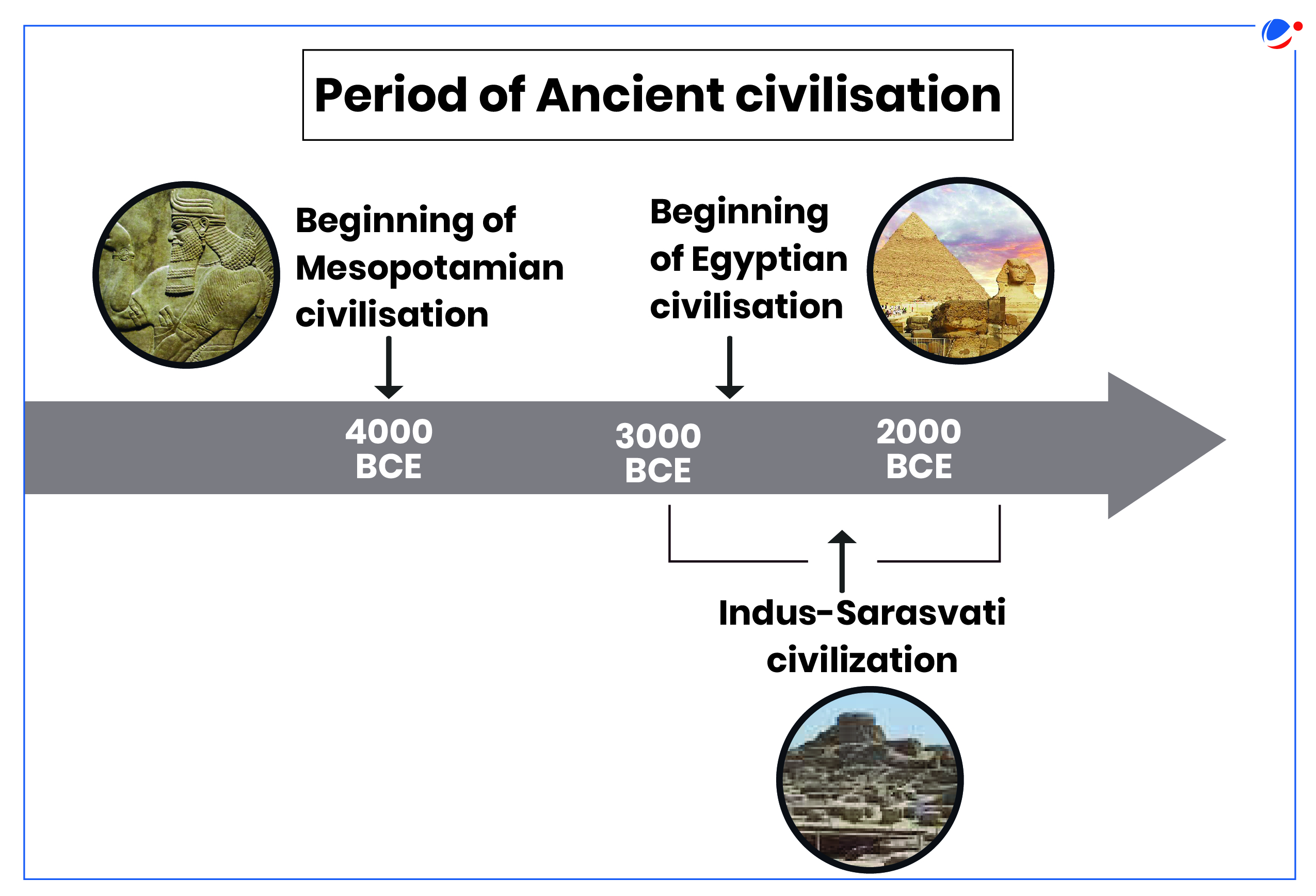Why in the News?
It has been 100 years since John Marshall, then director general of the Archaeological Society of India, announced the discovery of "Harappa civilization" on September 20, 1924.
About Harappa Civilization
- Background: Harappa civilization also known as 'Indus Valley Civilisation'. It was discovered first at Harappa in modern day Punjab province of Pakistan in 1921 by Daya Ram Sahni.
- It is identified as a Bronze-age civilization because many objects have been found that are made up of copper-based alloys.
- Location: North-western regions of Indian subcontinent. It spans across 2,000 sites in India, Pakistan, and Afghanistan. Most of the sites are found located between Indus and Saraswati River basins.
- Extent of Civilization: Daimabad in Maharashtra (Southernmost), Alamgirpur in UP (Easternmost), Sutgakendor in Pakistan (Westernmost), and Manda in Jammu (Northernmost).
- Time-Period: It flourished from 6000 BCE to 1300 BCE. The archaeological findings reveal the gradual development of the Harappan culture.
- Early Harappan (6000 BCE-2600 BCE) is a formative phase of the civilisation.
- Mature Harappan (2600 BCE-1900 BCE), the urban phase of the civilization, represents its most prosperous period.
- This decadent phase (1900 BCE-1300 BCE) is termed as Late Harappan.

Key Features of Harappa Civilization
Key Features | |
| Town planning and Architecture |
|
| Agriculture |
|
| Craft |
|
| Arts |
|
| Trade and Commerce |
|
| Religion & Culture |
|
| Writing System |
|
Significance of Discovery of Harappa Civilization | |||
| Provides earliest evidence of settled life in South Asia. | Advanced urban planning influenced later urban development concepts. | Provides earliest evidence of extensive trade networks & cultural exchanges in ancient world. | Addressing Climate change Mitigation as it is believed IVC declined due to environmental changes. |
Challenges Regarding Harappa Civilization
- Undeciphered Writing System: Limits our understanding of the language, culture, and beliefs of the Harappa Civilization.
New Evidences for Harappa Civilization
|
- Lack of Clear Hierarchies: While the Harappa Civilization had cities and residential segregation, there is no definitive evidence of a centralized political authority or a clear social hierarchy.
- Role of Women: While there are some depictions of women in art and seals, their exact status and rights remain unclear.
- Decline of Harappa Civilization: Many factors such as decline in soil fertility, earthquake, climate change, and invasion by Aryan etc. are attributed decline of Harappa civilization however exact reason is unknown.
- Challenges About Excavation
- Limited Excavation: Political and geographic factors, such as the India-Pakistan border and local development, have hindered more extensive archaeological work.
- Recovering and Classifying Artifacts: Valuable artefacts that are found intact were either lost in the past or hoarded and never retrieved.
- Destruction of sites: The sites of the Indus Valley Civilization were buried for thousands of years, and many have been subject to damage due to flooding, erosion, or modern development.
Conclusion
The Harappa Civilization, one of the earliest and most advanced urban societies of the ancient world declined by 1300 BCE. However, it left its mark in urban planning, craftsmanship, and metallurgy etc. Despite the mysteries surrounding its undeciphered script and sudden decline, the Harappans contributed significantly to the cultural and historical foundation of South Asia.
Major Cities/Sites & Findings | |||
| Site/city | Location | Discovered/Excavated by | Major Findings |
| Harappa | Pakistan | Daya Ram Sahni in 1921 | Red sandstone Male torso, Stone symbols of Lingam, Granaries, Mother Goddess etc. |
| Mohenjo-Daro | Pakistan | R D Banerjee in 1922 | Town Planning, Citadels, Drainage system, Great Bath |
| Ganweriwala | Cholistan area of Pakistan | Rafique Mughal in 1973 | Terracotta unicorn figurines, Twisted clay tablet with Indus script etc. |
Rakhigarhi | Haryana in India | First discovered in the 1960s by Archeological Survey of India. | Granary, cemetery, drains, terracotta bricks. |
| Dholavira | Rann of Kachchh (Gujarat) | Jagat Pati Joshi in 1968 | Unique water harnessing system and its storm water drainage system, only site divided in 3 parts, Megalithic stone circle. |
| Lothal | Gujrat | S Rao in 1955 | Dockyard, fire altars |



